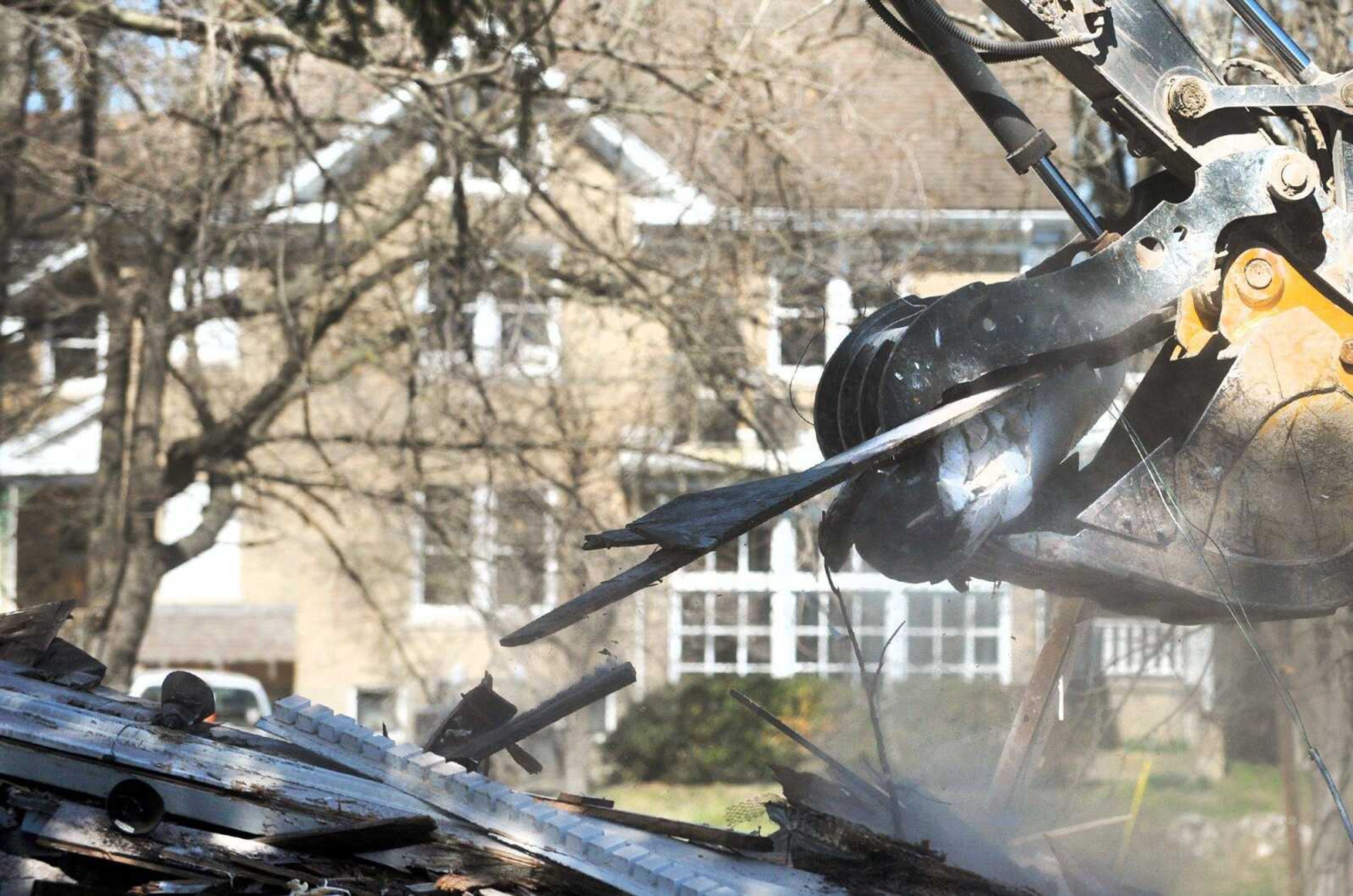Plans for Greek housing proceed despite preservationists' objections
Southeast Missouri State University staff, as well as representatives from Greek organizations, will meet with an architect this week to discuss the design and financial details of a Greek housing project that has drawn criticism from historic preservationists...
Southeast Missouri State University staff, as well as representatives from Greek organizations, will meet with an architect this week to discuss the design and financial details of a Greek housing project that has drawn criticism from historic preservationists.
At a February meeting, the board of regents approved a conceptual design and authorized a design development at a nine-acre site on the west side of North Sprigg Street for a long-discussed Greek Village.
Up to seven buildings could be built on the site and would house 20 to 25 students at a total cost of $1.8 to $2 million per building, university officials said. An initial estimate of the lease cost per year to the organizations would be $120,000.
Three fraternities have expressed interest in leasing the new housing, according to Southeast, and the money paid to the university would go toward debt service.
Greystone Estate, built in 1921, was razed at the development site Monday as university officials made way for the new construction. A second home, known as the Shivelbine House, also will be razed as the project continues. Shivelbine was built between 1917 and 1921.
J.W. Gerhardt, a well-known contractor, built more than 800 buildings in Cape Girardeau, including Greystone, which became the first country club in Cape Girardeau. He also built the Southeast Missourian building, Southeast Missouri Hospital and Magill Hall of Science at the university, according to Southeast Missourian archives.
His granddaughter, Christine Owen, launched an online petition in hopes of saving both houses and gathered more than 700 signatures.
She and local preservationists urged the university to incorporate the houses into its Greek Village plans, but Southeast said repairing the houses was not economically feasible.
Marise Compass, of Cape Girardeau, said she plans to write a book about Gerhardt, her step-grandfather.
"I was shocked and heartbroken when I heard the news," Compass said in an email. "I could hardly believe my eyes, choking back tears as I took in the scene. It was like a bomb had hit Greystone."
Compass said she thought "more care would be taken with how the demolition was accomplished," such as salvaging the wood, fixtures and windows.
The Missouri Preservation organization on its Facebook page called the razing of Greystone "one of the most callous and spiteful demolitions yet" at Southeast.
The university has been criticized in the past for razing historic structures, including in 2013, when it dismantled a handball court at the River Campus.
The court, built in 1843 or 1853, was possibly the oldest in the nation and was dismantled to make room for an academic and residential building on the River Campus. Bricks salvaged from the court were used in the construction of the new building.
Kathy Mangels, vice president for finance and administration at Southeast, said there are a lot of buildings in the community people may have a personal closeness to, but there are challenges when it comes to using old houses as student housing.
Greystone was used for years by Southeast fraternities, but was closed last year when problems were found with the roof, water infiltration and ductwork.
Mangels said bringing the home up to current housing codes would've included major renovations, such as adding an elevator and two sets of stairs. University officials estimated the cost at more than $400,000.
"We have to take all that into consideration," she said. "People appreciate the history that a house may have had in the community, and it's difficult to understand choices that have to be made."
Shivelbine is leased to Sigma Nu, but also would require major fixes to infrastructure to remain habitable, the university said. Once students finish the semester, officials will look at razing the house for the location of new buildings.
At the end of the week, Mangels the architect will have a better idea design wise of floor plans and a civil engineer will determine the most cost effective way to lay out buildings on the site.
The board of regents will review the detailed design plans and cost estimates at its next meeting, which has not yet been scheduled, before going forward with construction.
klamb@semissourian.com
388-3639
Connect with the Southeast Missourian Newsroom:
For corrections to this story or other insights for the editor, click here. To submit a letter to the editor, click here. To learn about the Southeast Missourian’s AI Policy, click here.









